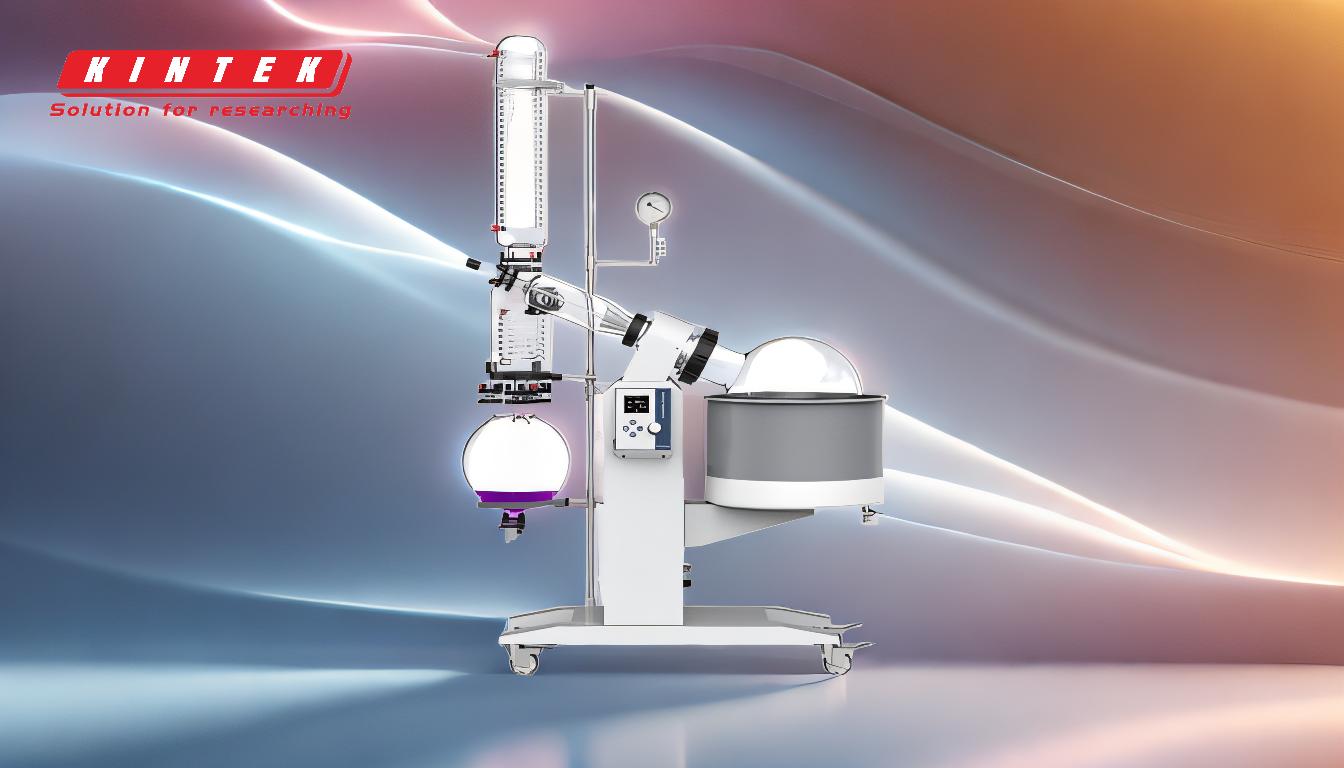Removing solvents without a rotary evaporator is a common challenge in laboratories, especially when dealing with heat-sensitive compounds or when a rotary evaporator is unavailable. Several alternative methods can be employed, each with its own advantages and limitations. These methods include using falling film evaporators, wiped film evaporators, vacuum ovens, Schlenk lines, and simple distillation setups. The choice of method depends on the solvent's properties, the sample's sensitivity, and the desired outcome.
Key Points Explained:

1. Falling Film Evaporator
-
How it works:
- A falling film evaporator operates similarly to a vertical shell-and-tube heat exchanger. The solvent flows downward as a thin film over the inner surface of heated tubes. The heat causes the solvent to evaporate, and the vapor is separated from the liquid.
-
Advantages:
- Efficient for heat-sensitive compounds due to short contact time with heat.
- Suitable for large-scale operations.
-
Limitations:
- Requires a continuous flow of solvent, making it less ideal for small-scale or batch processes.
- Higher initial setup cost compared to simpler methods.
2. Wiped Film Evaporator
-
How it works:
- This method uses a rotating wiper blade to spread the solvent into a thin, turbulent film on the heated inner surface of the evaporator. The thin film ensures rapid evaporation, and the vapor is condensed and collected.
-
Advantages:
- Excellent for heat-sensitive and viscous materials due to short residence time and efficient heat transfer.
- Can handle high boiling point solvents.
-
Limitations:
- Complex setup and higher maintenance requirements.
- More expensive than other alternatives.
3. Vacuum Oven
-
How it works:
- The sample is placed in a vacuum oven, where the pressure is reduced, and the temperature is controlled. The reduced pressure lowers the solvent's boiling point, allowing it to evaporate at lower temperatures.
-
Advantages:
- Simple and cost-effective for small-scale operations.
- Suitable for removing residual solvents after initial evaporation.
-
Limitations:
- Slower compared to other methods.
- Not ideal for volatile solvents due to potential safety concerns.
4. Schlenk Line
-
How it works:
- A Schlenk line uses a vacuum system to remove solvents under reduced pressure. The sample is typically placed in a flask connected to the Schlenk line, and the solvent is evaporated under vacuum.
-
Advantages:
- Precise control over pressure and temperature.
- Suitable for air-sensitive compounds.
-
Limitations:
- Requires specialized equipment and expertise.
- Limited to small-scale operations.
5. Simple Distillation Setup
-
How it works:
- A basic distillation setup involves heating the solvent in a flask, condensing the vapor, and collecting it in a separate flask. This method relies on the difference in boiling points between the solvent and the solute.
-
Advantages:
- Low-cost and straightforward setup.
- Effective for solvents with moderate boiling points.
-
Limitations:
- Not suitable for heat-sensitive compounds.
- Limited to solvents with distinct boiling points.
6. Air Drying or Evaporation at Ambient Conditions
-
How it works:
- The sample is left open to the air, allowing the solvent to evaporate naturally. This method is often used for low-boiling-point solvents or when no specialized equipment is available.
-
Advantages:
- No equipment or energy required.
- Simple and cost-effective.
-
Limitations:
- Very slow and inefficient for large volumes or high-boiling-point solvents.
- Risk of contamination or sample degradation.
7. Freeze Drying (Lyophilization)
-
How it works:
- The sample is frozen, and the solvent is removed by sublimation under vacuum. This method is particularly useful for water-based solvents.
-
Advantages:
- Preserves the integrity of heat-sensitive compounds.
- Suitable for biological samples.
-
Limitations:
- Requires specialized equipment (freeze dryer).
- Time-consuming and energy-intensive.
Each of these methods offers unique benefits and trade-offs, making them suitable for different scenarios. The choice of method should be guided by the solvent's properties, the sample's sensitivity, and the available resources. For instance, falling film and wiped film evaporators are ideal for large-scale or heat-sensitive applications, while vacuum ovens and Schlenk lines are better suited for small-scale or air-sensitive samples. Simple distillation and air drying are cost-effective options for less demanding tasks, whereas freeze drying is reserved for specialized applications requiring minimal thermal stress.
Summary Table:
| Method | Advantages | Limitations |
|---|---|---|
| Falling Film Evaporator | Efficient for heat-sensitive compounds; suitable for large-scale operations. | Requires continuous flow; higher setup cost. |
| Wiped Film Evaporator | Ideal for heat-sensitive, viscous materials; handles high boiling solvents. | Complex setup; expensive. |
| Vacuum Oven | Simple and cost-effective for small-scale operations. | Slow; not ideal for volatile solvents. |
| Schlenk Line | Precise control; suitable for air-sensitive compounds. | Requires specialized equipment; limited to small-scale. |
| Simple Distillation | Low-cost and straightforward setup. | Not suitable for heat-sensitive compounds. |
| Air Drying | No equipment or energy required; simple and cost-effective. | Slow; risk of contamination or degradation. |
| Freeze Drying | Preserves heat-sensitive compounds; ideal for biological samples. | Requires specialized equipment; time-consuming and energy-intensive. |
Need help choosing the right solvent removal method? Contact our experts today for personalized advice!









